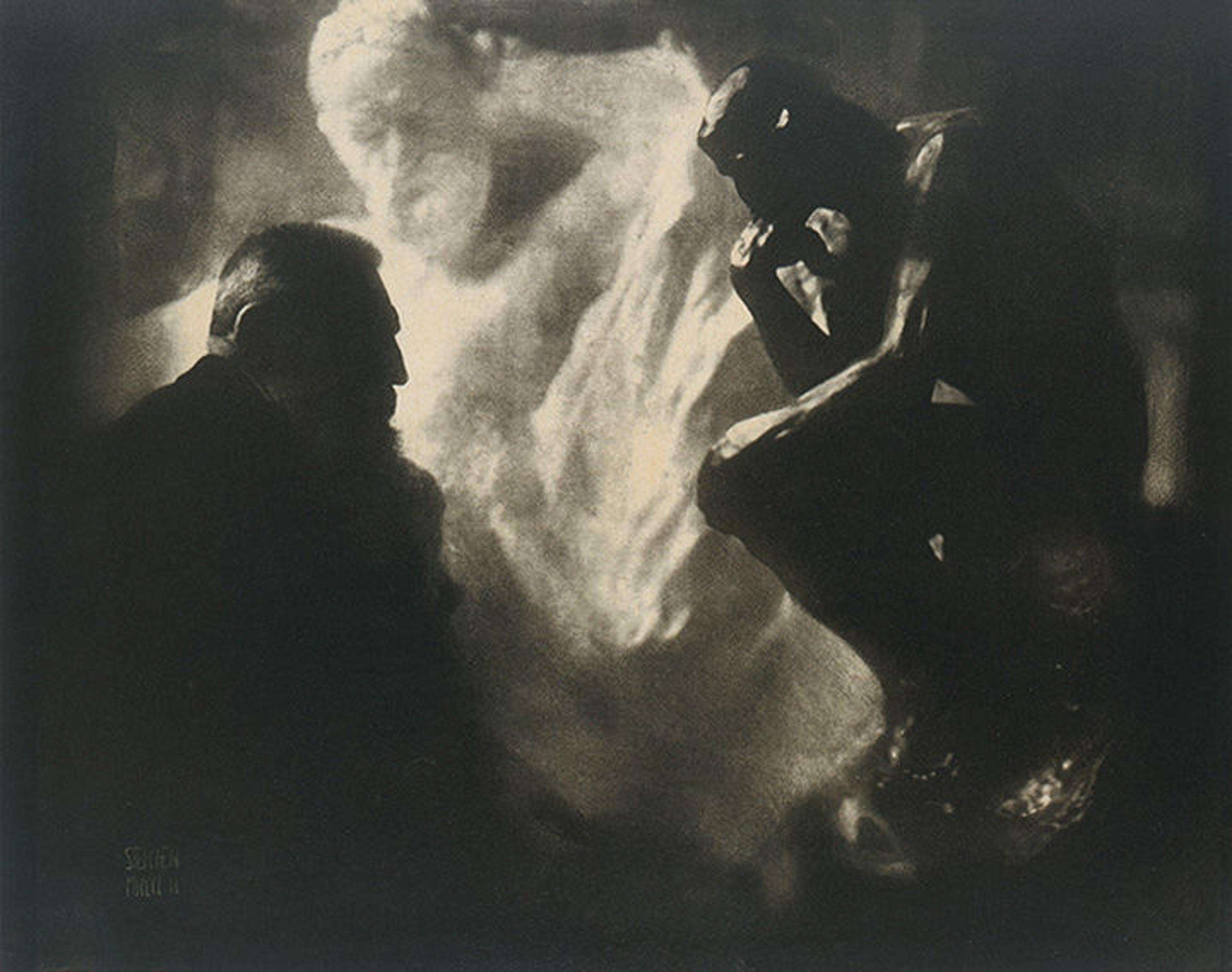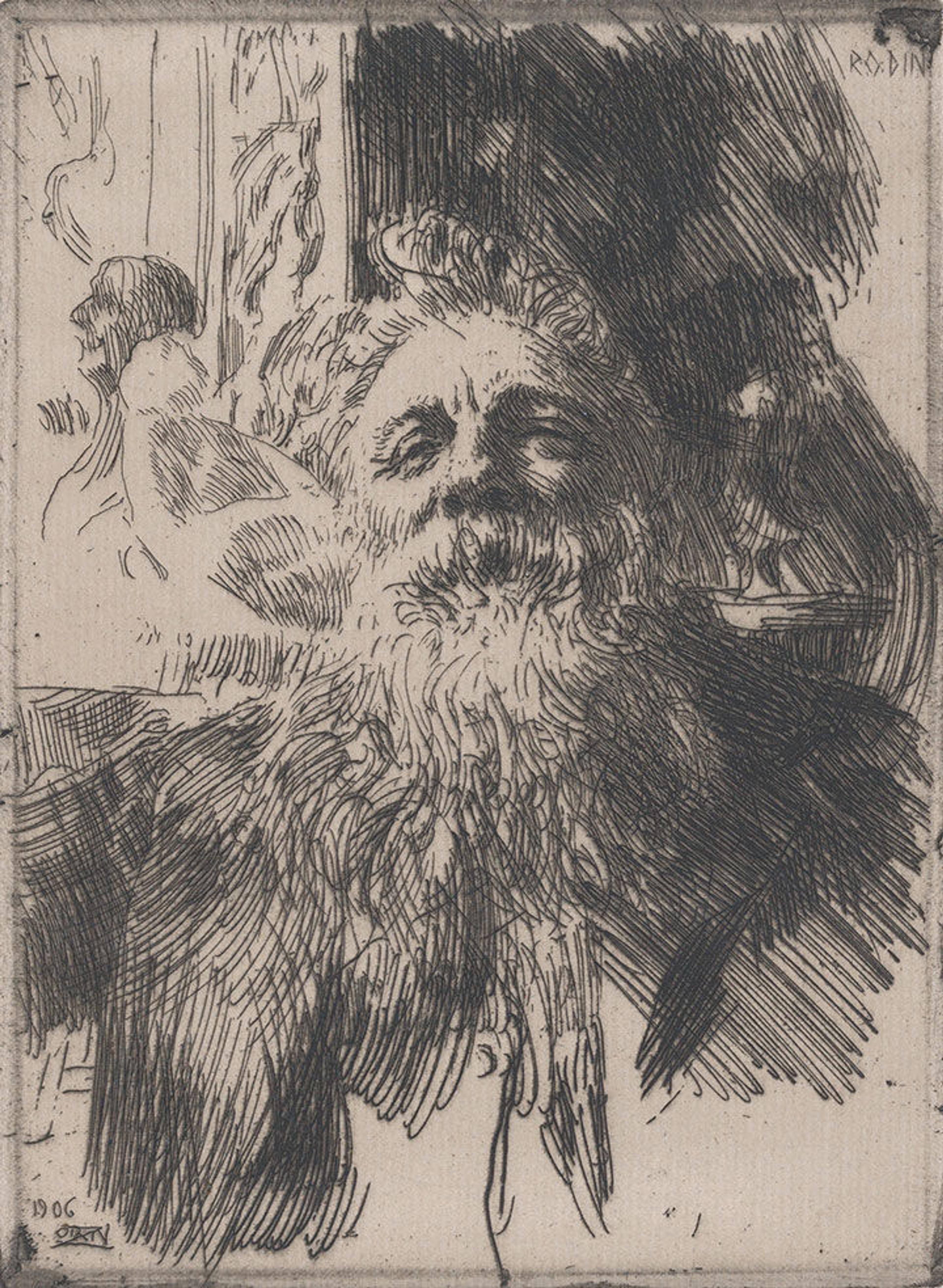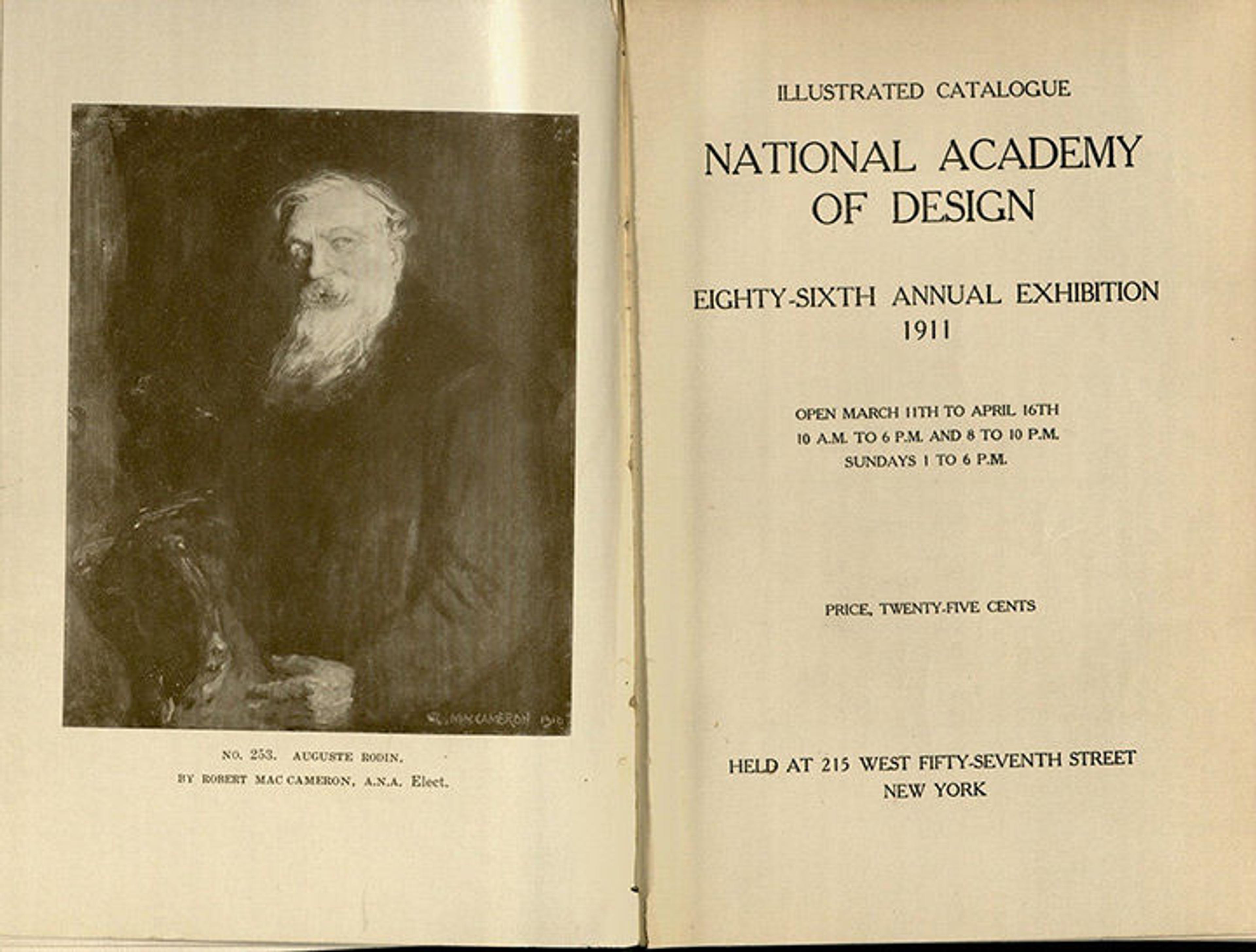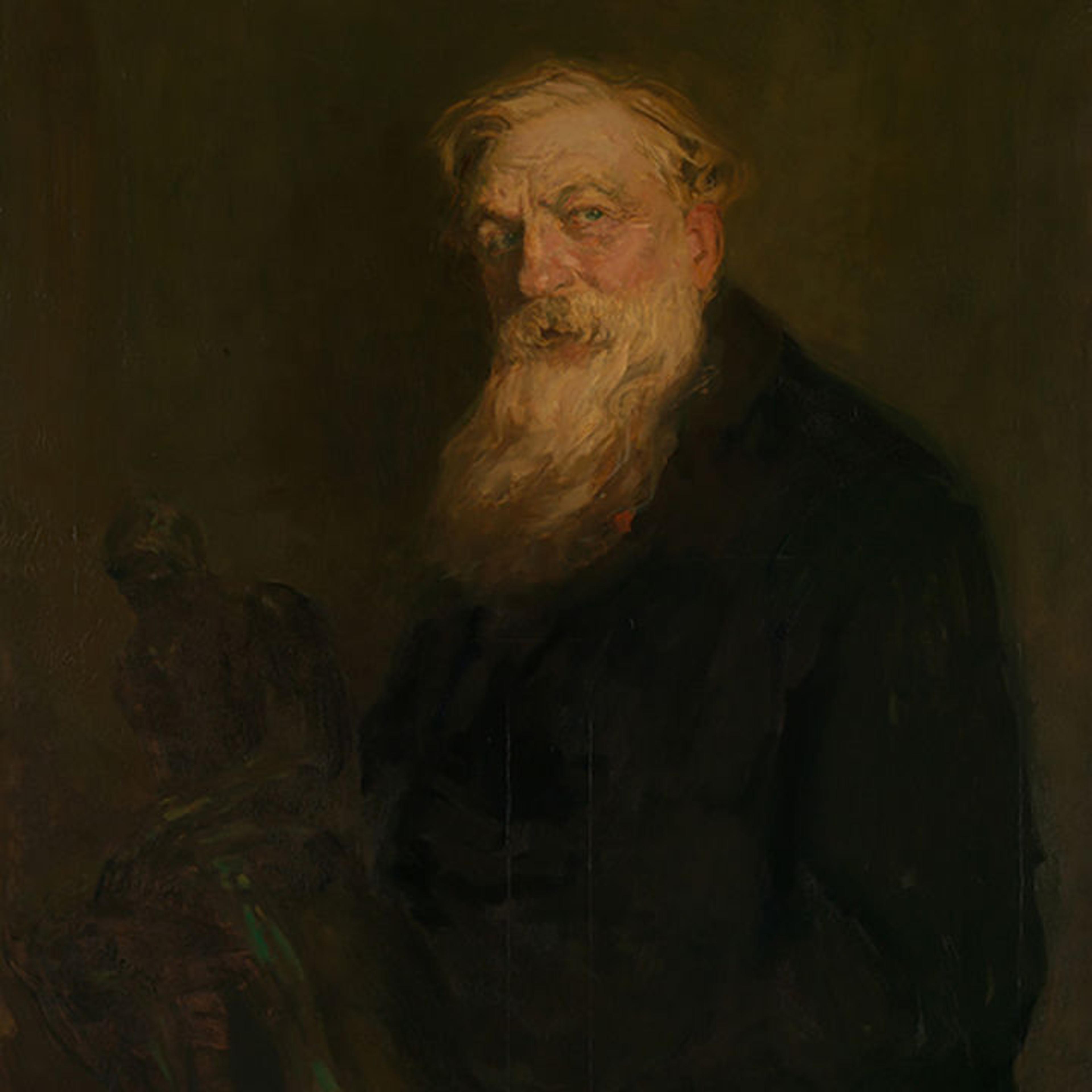
Robert MacCameron (American, 1866–1912). Auguste Rodin, 1910. Oil on canvas, 39 5/16 x 31 15/16 in. (99.8 x 81.1 cm). The Metropolitan Museum of Art, New York, Gift of J. Pierpont Morgan, 1912 (12.171)
«In 1912, the year The Met opened a gallery devoted to the work of Auguste Rodin, collector and financier J. P. Morgan also donated a portrait of the sculptor to the Museum.»
The painting, by the American artist Robert MacCameron (1866–1912), gives us a glimpse of the 69-year-old Rodin in living color. (My favorite detail is the auburn tinge to his hair and beard—who knew that Rodin was a redhead?) Because MacCameron used bitumen, an unstable substance, areas of the picture have darkened over time, but we can see that Rodin holds a model of his iconic sculpture The Thinker. He cuts an impressive figure for a man who was only a little over five feet three inches tall.

Edward J. Steichen (American [born Luxembourg], 1879–1973). Rodin—The Thinker, 1902. Gum bichromate print, 15 9/16 x 19 in. (39.6 x 48.3 cm). The Metropolitan Museum of Art, New York, Gilman Collection, Purchase, Harriette and Noel Levine Gift, 2005 (2005.100.289). © Permission of Joanna T. Steichen
I like to imagine how excited MacCameron was when he met Rodin during one of his regular trips to Paris, in the summer of 1910. MacCameron had worked his way up from humble mid-western roots—he was reportedly a lumberjack in his teens—to become a respected society portraitist and genre painter who divided his time between New York and Europe. But Rodin was one of the most celebrated artists in the world. It's hard to grasp today just how legendary the sculptor was, but the portraits of him in The Met collection give a sense of his fame: drawings, photographs, prints, and sculptures, by American, British, French, and Swedish artists. (You can find more by searching the Museum's website.) MacCameron must have been elated when Rodin agreed to sit for him.

Anders Zorn (Swedish, 1860–1920). Auguste Rodin (detail), 1906. Etching; third state of three, sheet: 12 13/16 x 9 15/16 in. (32.6 x 25.2 cm). The Metropolitan Museum of Art, New York, Harris Brisbane Dick Fund, 1917 (17.3.683)
In fact, we know quite a bit about the creation and early history of this portrait, thanks to graduate researchers Ilene Fort and Sophia Feist. MacCameron's journal notes that on August 10, 1910, he "called . . . on Rodin the greatest of sculptors. He is a charming person—a splendid big head, with light grey warm creamy hair and beard. . . . I am interested . . . in the idea of painting a good portrait of [him]." The same journal entry mentions the planned Rodin gallery at The Met, with the added gossip that Museum patron Thomas Fortune Ryan had already spent $25,000 (about $611,000 today) buying sculpture for it.

Left: Photocopy of page from Robert MacCameron's journal, August 10, 1910. Archives of the American Wing, The Metropolitan Museum of Art, New York. Middle and Right: Photocopy of letter from Auguste Rodin to Robert MacCameron, September 23, 1910. Archives of the American Wing, The Metropolitan Museum of Art, New York
By August 18 the portrait was underway and by September 21 it was completed. Rodin graciously wrote MacCameron, "I am very happy with the portrait that you made of me (so expressive)." It's clear from the documentation that the men hoped to place the painting at The Met, but it was exhibited instead at the National Academy of Design in New York and the Carnegie Institute in Pittsburgh in 1911.

Frontispiece of the catalogue for the National Academy of Design: Eighty-Sixth Annual Exhibition (1911). Thomas J. Watson Library, The Metropolitan Museum of Art, New York, Gift of the National Academy of Design
Shortly after, J. P. Morgan acquired and gave the portrait to The Met, where it hung in the new gallery dedicated to Rodin. Poignantly, MacCameron died unexpectedly of heart disease at the end of 1912, but not before his work had gone on display at the Museum. It now returns to the galleries as part of the exhibition Rodin at The Met, on view through January 15, 2018.

Related Content
Read a blog series on Rodin at Now at The Met.
See more digital content related to Rodin at The Met.
Heilbrunn Timeline of Art History: "Auguste Rodin"
